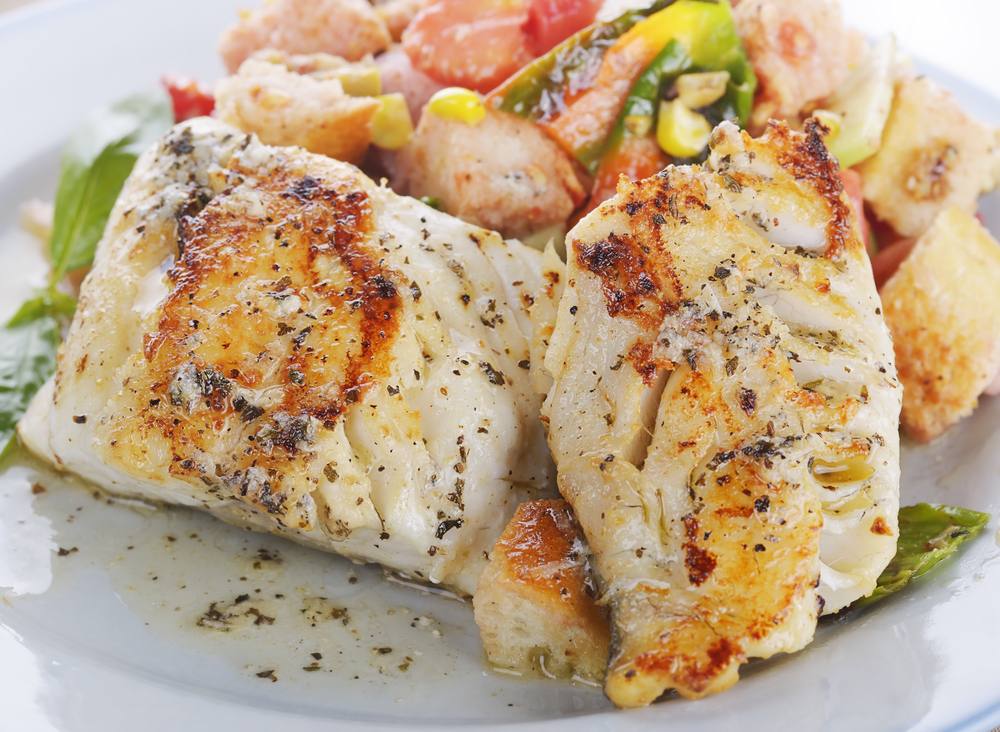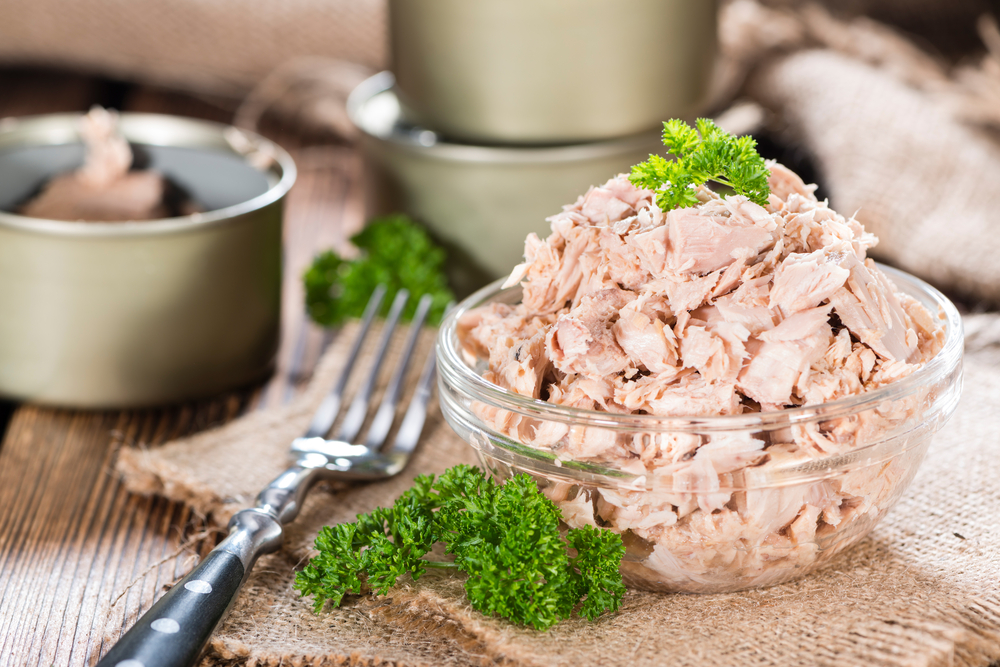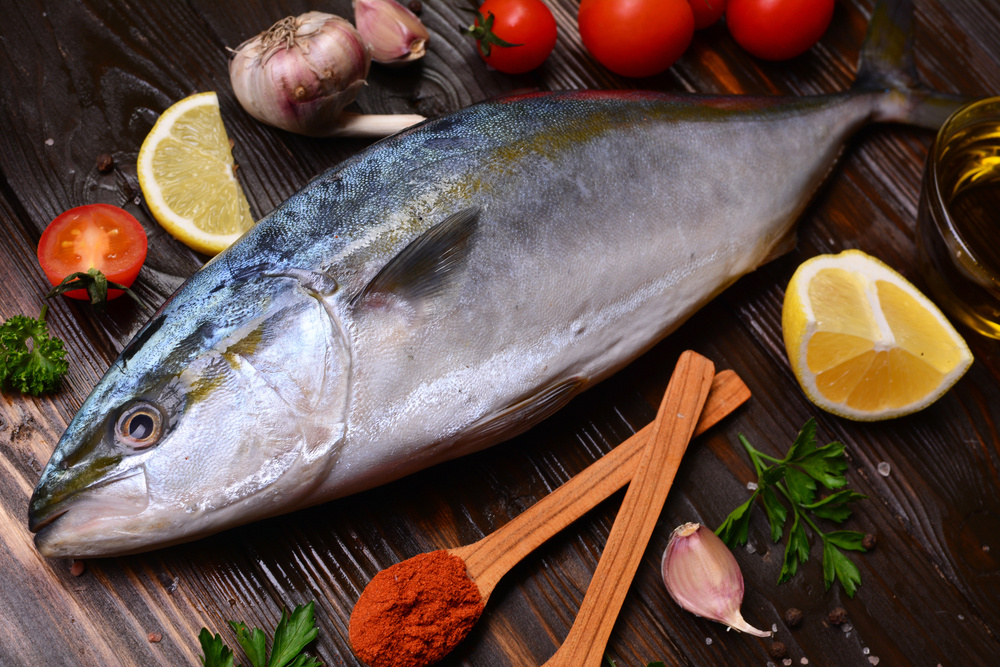I have always been fascinated by the diversity of flavors and textures that seafood has to offer. One fish that has recently caught my attention is the cobia.
This large, predatory fish is found in warm waters around the world and is prized for its delicious taste and firm texture.
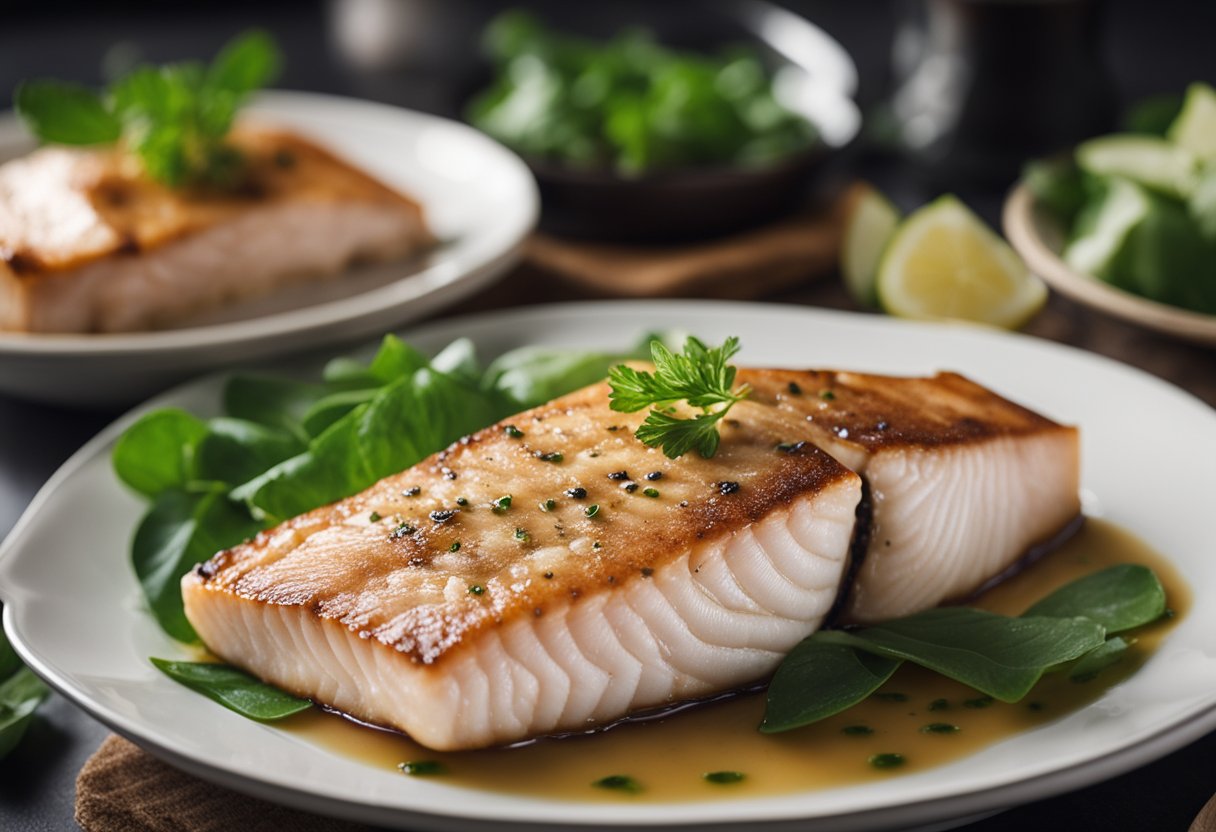
Cobia has a mild, sweet flavor with a buttery taste that is similar to tuna or mahi-mahi. Its firm texture makes it a versatile fish that can be cooked in a variety of ways, from grilling and baking to pan-searing.
Understanding the taste profile and texture of cobia is essential to fully appreciate this delicious fish and make the most of its culinary potential.
Key Takeaways
- Cobia is a large, predatory fish with a mild, sweet flavor and buttery taste similar to tuna or mahi-mahi.
- Its firm texture makes it a versatile fish that can be cooked in a variety of ways, from grilling and baking to pan-searing.
- Understanding the taste profile and texture of cobia is essential to fully appreciate this delicious fish and make the most of its culinary potential.
Understanding Cobia
Cobia is a large, saltwater fish that can be found in warm waters worldwide. It is also known as black kingfish, black salmon, or lemon fish.
The color of the cobia fish can range from dark brown to gray, and it has a pointed dorsal fin with long dark stripes that cover its body.
Cobia fish can grow up to six feet in length and weigh around 100 pounds. They have a unique appearance, with a flat head and a protruding lower jaw. The cobia fish is often compared to sharks due to its appearance, but it is not related to them.
Cobia fish are deep-sea fish that live 50 to 100 meters below sea level. They are known to feed on crabeater and other fish. Cobia fish are also a popular game fish, and many anglers enjoy catching them due to their size and strength.
In terms of taste, cobia fish has a mild, sweet flavor with little fat found in the meat. It is often compared to swordfish or mahi-mahi in terms of texture and flavor, but with a richer, more savory taste.
Cobia fish is an excellent source of protein, Omega-3 fats, and selenium. It is also low in mercury levels and is safe for people who are pregnant or nursing to eat regularly.
Overall, cobia fish is a delicious and healthy seafood option that is worth trying if you have the opportunity.
Cobia’s Natural Habitat
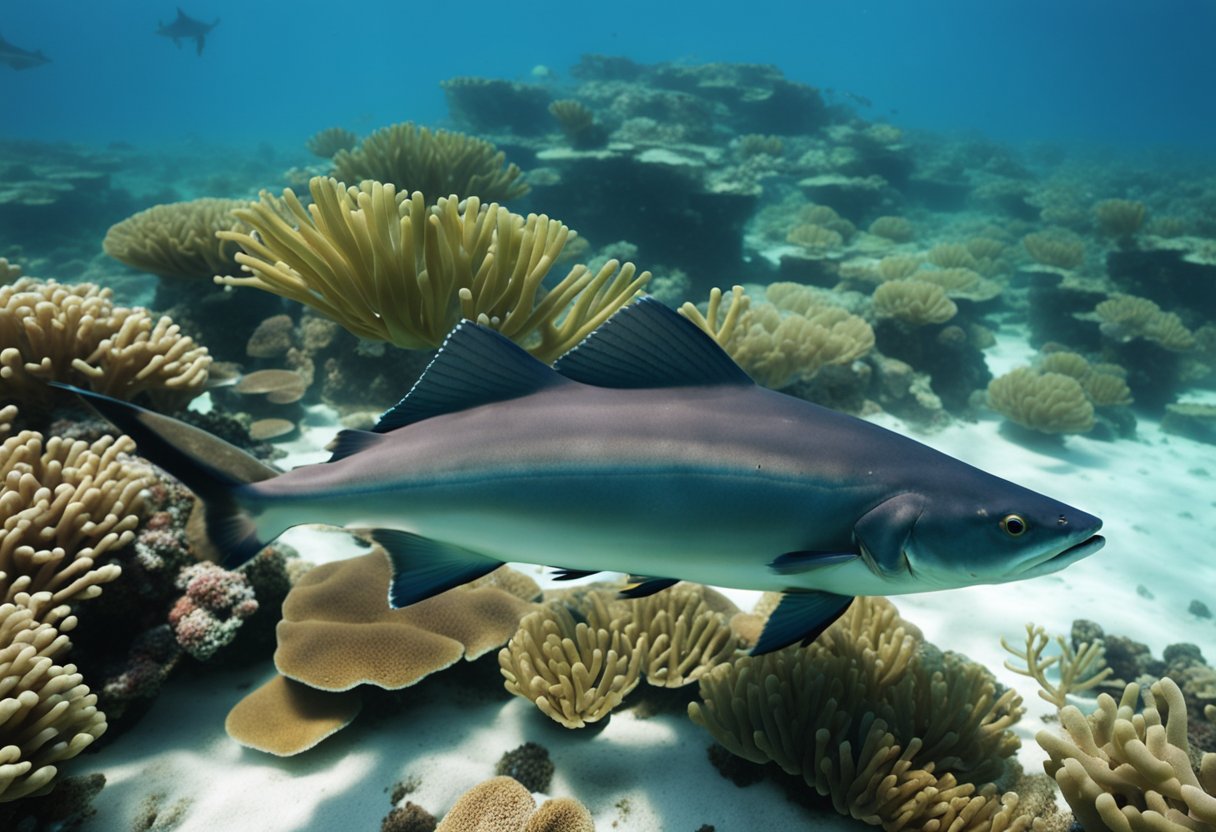
Cobia is a migratory fish that can be found in warm waters worldwide. It is native to the western Atlantic Ocean, including the Gulf of Mexico, and can also be found in the eastern Pacific Ocean.
The fish prefers water temperatures between 68 and 86 degrees Fahrenheit, making Florida and other southern states in the US prime locations for cobia fishing.
Cobia is a pelagic fish that prefers to inhabit open waters, but it can also be found near the shore, around reefs, and in estuaries.
They are often found swimming near floating debris or structures such as buoys, oil rigs, and other man-made objects. In the Gulf of Mexico, cobia are known to migrate northward in the spring and southward in the fall.
Cobia are often caught by recreational and commercial fishermen in Florida, where the fishery is managed by the Florida Fish and Wildlife Conservation Commission.
The state has strict regulations on the size and number of cobia that can be caught, with a minimum size limit of 33 inches and a bag limit of one fish per person per day.
Overall, cobia’s natural habitat is warm waters, particularly in the Gulf of Mexico and Florida. They prefer open waters but can also be found near the shore and around structures.
Cobia are an important fishery in Florida, and the state has regulations in place to ensure the sustainability of the population.
Cobia’s Diet
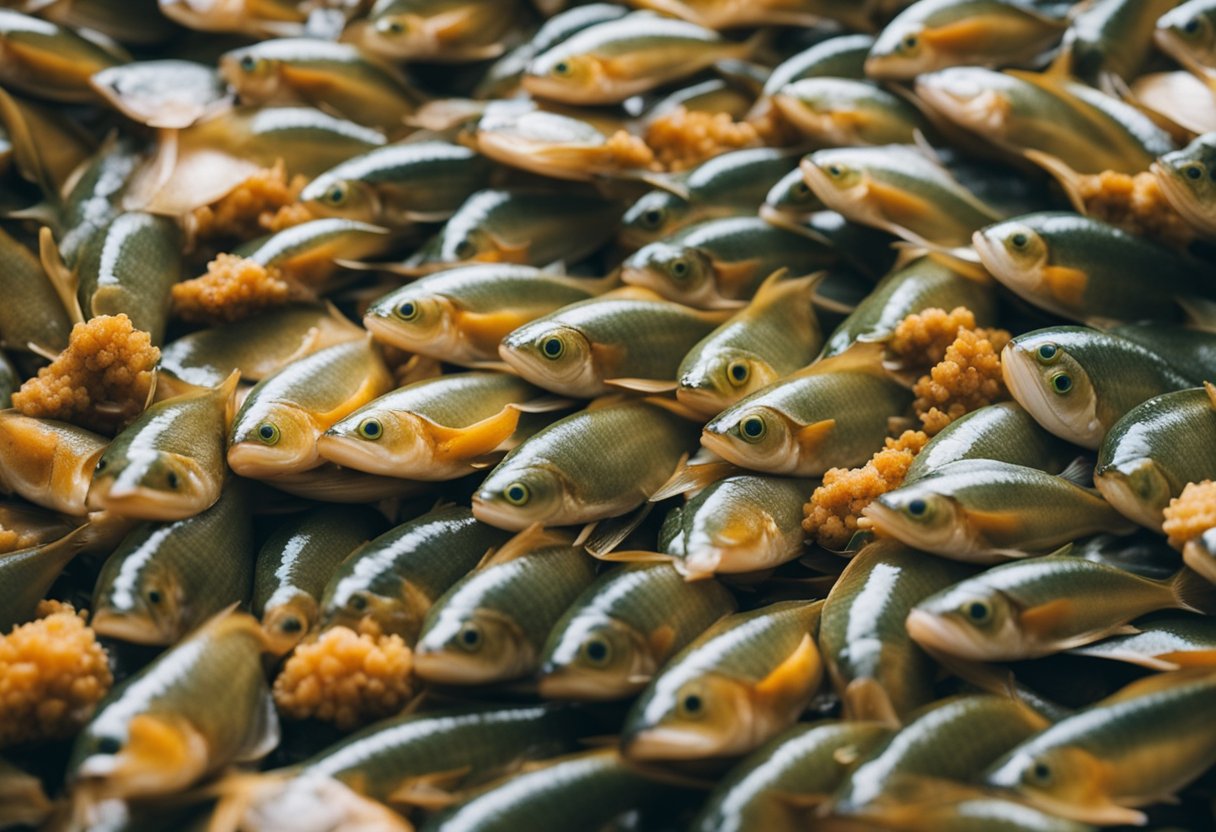
As a fish that can be found worldwide, cobia has a diverse diet that can vary depending on where it is caught.
Generally, cobia’s diet comprises crustaceans, shrimp, and crabs, which can affect its taste. Cobia that feed on crabs tend to have a sweet and succulent flavor, whereas those that feed on shrimp and other crustaceans may have a more savory taste.
In addition to crustaceans, cobia also feeds on various baitfish and squid. Those that feed on squid tend to have a more custardy and creamier taste.
The water in which cobia is caught can also affect its taste, as different regions have different types of prey available.
Overall, cobia’s diet plays a significant role in its taste. The type of prey it feeds on can affect the flavor, making it either sweet or savory. Therefore, it is essential to consider the source of cobia when purchasing it to ensure that it meets your taste preferences.
Cobia Population and Sustainability

As a seafood lover, I am always concerned about the sustainability of the fish I consume. Cobia is a popular fish that is found in warm waters worldwide.
According to NOAA Fisheries, the cobia population is considered stable and not overfished. However, there are concerns about the impact of fishing nets on the cobia population.
Cobia are often caught using gill nets and trawling nets, which can unintentionally catch other species of fish and marine animals.
This can lead to bycatch, which can harm the population of other species. However, there are regulations in place to ensure that the use of nets is sustainable and does not harm the cobia population.
Predators are also a concern for the cobia population. Sharks, dolphins, and other large marine predators feed on cobia, which can impact their population. However, cobia are fast swimmers and can evade predators, which helps to maintain their population.
Overall, the cobia population is considered stable and sustainable. However, it is important to ensure that fishing practices are sustainable and do not harm the population of other species.
By being responsible seafood consumers, we can help to ensure that cobia and other fish populations remain healthy for future generations.
Cobia’s Taste Profile
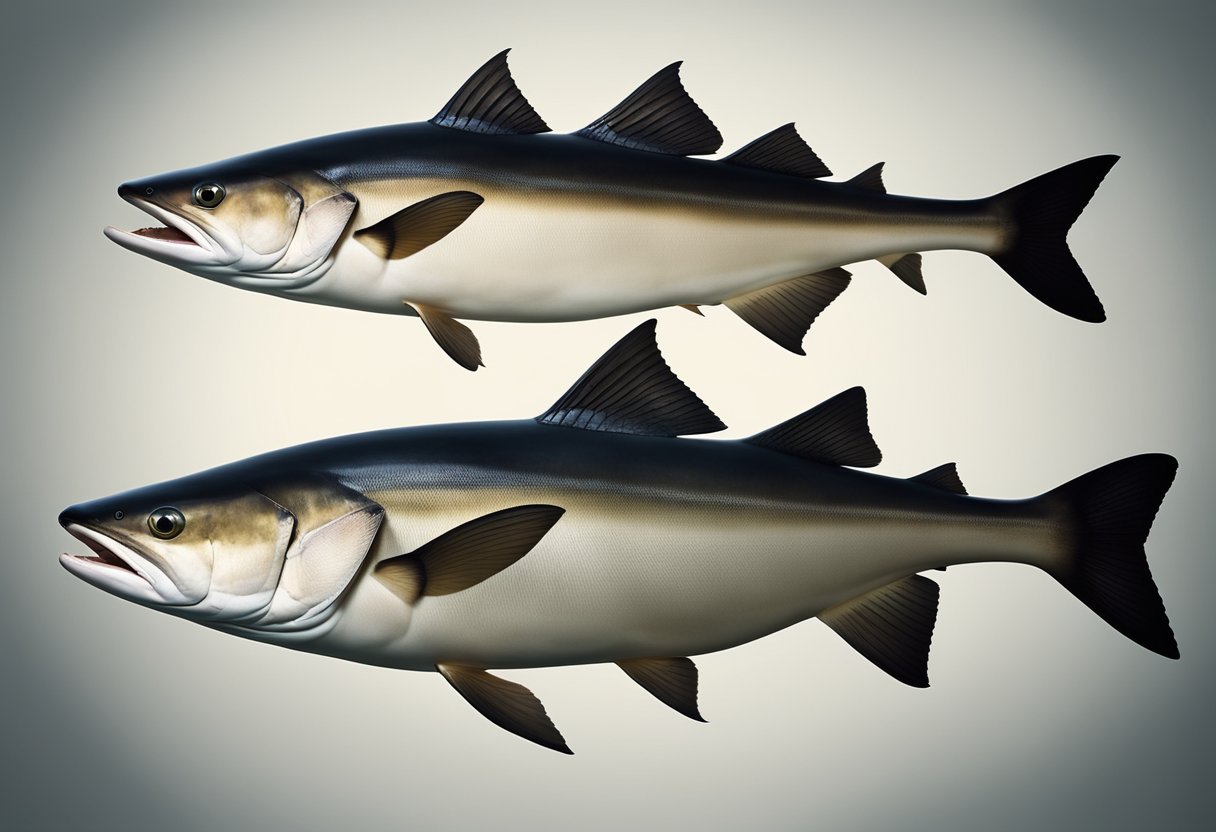
Cobia is a delicious fish that has a mild, slightly sweet taste with a buttery texture. Its flavor can be compared to that of swordfish or mahi-mahi, but less fishy.
Cobia is a versatile fish that can be cooked in a variety of ways, making it a popular choice among chefs and home cooks alike.
One of the best ways to cook cobia is to grill or broil it. The fish can be cut into fillets, seasoned lightly, and grilled or broiled until fully cooked.
The fish is done once it can be easily flaked with a fork. This cooking method helps to enhance the natural flavors of the fish while giving it a slightly smoky taste.
Cobia is also great for baking, sautéing, and even eating raw, like sushi or ceviche. When cooked properly, cobia has a firm, moist texture that is perfect for a variety of dishes. Its mild taste makes it an ideal fish for those who are new to seafood or who prefer a less fishy taste.
In addition to its delicious flavor, cobia is also a healthy choice. It is an excellent source of protein, Omega-3 fatty acids, and selenium. It is also low in mercury levels and is safe for people who are pregnant or nursing to eat regularly.
Overall, cobia is a mild and slightly sweet fish with a buttery flavor that makes it a popular choice among seafood lovers. Its versatility in cooking methods and health benefits make it a great addition to any meal.
Cobia’s Texture
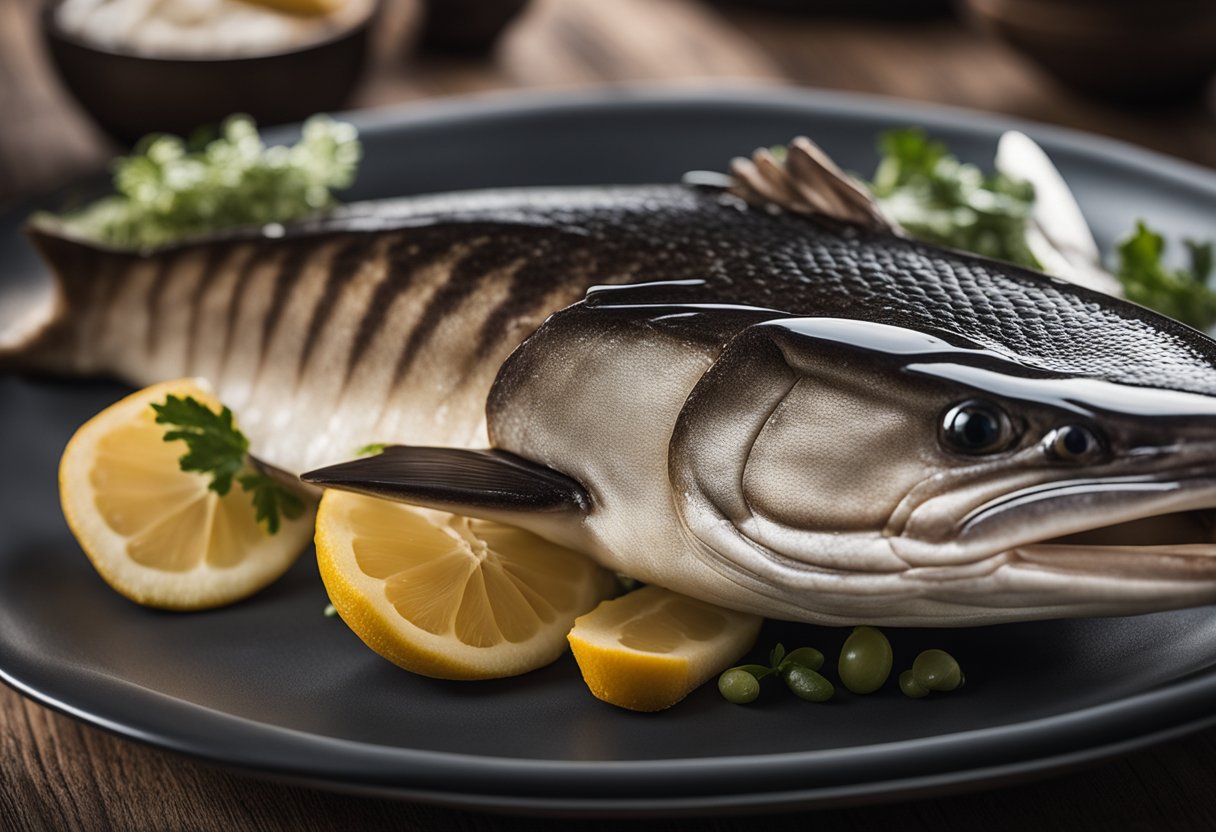
In addition to its mild taste, cobia also has a unique texture that sets it apart from other fish. Cobia has a firm texture, which means that it holds its shape well when cooked. This texture also gives it a satisfying bite that is both tender and meaty.
When cooked properly, cobia has a moist and buttery texture that is sure to please even the most discerning seafood lovers. Its firm flesh also makes it an excellent choice for grilling, as it holds up well to the high heat and doesn’t fall apart easily.
One of the best things about cobia’s texture is that it is versatile and can be prepared in a variety of ways. Whether you prefer it grilled, baked, or pan-seared, cobia’s firm texture ensures that it will hold up well to whatever cooking method you choose.
Overall, cobia’s texture is one of its standout qualities and is sure to impress anyone who tries it. Its firm, meaty texture and moist, buttery flavor make it a delicious and satisfying choice for any seafood dish.
Comparison with Other Fish
When it comes to the taste of cobia fish, it’s often compared to other mild saltwater white fish such as mahi-mahi, swordfish, or striped bass.
However, cobia has a richer, more savory taste due to its high-fat content, which gives it a silky texture and makes it suitable for grilling, frying, and baking.
Compared to mahi-mahi, cobia has a more pronounced flavor and a firmer texture. Mahi-mahi has a milder taste and a softer texture, which makes it a popular choice for fish tacos and ceviche. On the other hand, cobia is a great choice for grilling or pan-searing due to its firm texture.
Ling and cobia are both white meat fish with a mild flavor, but cobia has a richer taste due to its higher fat content. Ling has a flakier texture and a milder flavor, which makes it a popular choice for fish and chips.
Swordfish and cobia are both mild-tasting whitefish, but cobia has a richer taste and a firmer texture. Swordfish has a meatier texture and a milder flavor, which makes it a popular choice for grilling and broiling.
Salmon and cobia are both oily fish with a rich flavor, but salmon has a distinct flavor that sets it apart from cobia. Salmon has a buttery texture and a slightly sweet flavor, which makes it a popular choice for sushi and smoked salmon.
Tuna and cobia are both oily fish with a meaty texture, but tuna has a stronger flavor and a firmer texture. Tuna is a popular choice for sushi and sashimi due to its rich flavor and firm texture.
Black salmon, also known as sablefish or butterfish, has a rich, buttery flavor that is similar to cobia. However, black salmon has a softer texture and a more delicate flavor, which makes it a popular choice for grilling and smoking.
Cod and cobia are both white meat fish with a mild flavor, but cod has a softer texture and a milder taste. Cod is a popular choice for fish and chips and fish stews due to its delicate flavor and flaky texture.
Shark and cobia are both meaty fish with a mild flavor, but shark has a firmer texture and a slightly sweet taste. Shark is a popular choice for grilling and broiling due to its meaty texture and rich flavor.
In summary, cobia fish has a rich, savory taste that sets it apart from other mild saltwater white fish. Its high-fat content gives it a silky texture and makes it suitable for grilling, frying, and baking.
While it can be compared to other fish such as mahi-mahi, swordfish, or salmon, cobia has a unique taste and texture that makes it a great choice for a variety of dishes.
Cooking Cobia
When it comes to cooking cobia, there are a variety of methods to choose from. Here are some of the most popular ways to prepare this delicious fish:
Grilling
Grilling is one of the most popular ways to cook cobia. To grill cobia, simply brush the fish with olive oil and season with salt and pepper. Grill the fish over medium-high heat for about 10-12 minutes per side, or until the fish is cooked through and flakes easily with a fork.
Frying
Frying cobia is another popular way to prepare this fish. To fry cobia, simply coat the fish in seasoned flour or breadcrumbs and fry in hot oil until golden brown and crispy. Serve with your favorite dipping sauce for a delicious meal.
Ceviche
Ceviche is a popular way to prepare cobia in Latin American cuisine. To make ceviche, simply marinate cubed cobia in lime juice and seasonings for several hours until the fish is cooked through. Serve with tortilla chips or on top of a salad for a refreshing and healthy meal.
Baking
Baking is another great way to prepare cobia. To bake cobia, simply place the fish in a baking dish and season with your favorite spices and herbs.
Bake in a preheated oven at 375°F for about 20-25 minutes, or until the fish is cooked through and flakes easily with a fork.
Sautéing
Sautéing is a quick and easy way to prepare cobia. To sauté cobia, simply heat a small amount of oil in a pan over medium-high heat. Add the fish and cook for about 3-4 minutes per side, or until the fish is cooked through and golden brown.
Smoking
Smoking is a great way to add flavor to cobia. To smoke cobia, simply season the fish with your favorite spices and herbs and smoke in a smoker at 225°F for about 2-3 hours, or until the fish is cooked through and tender.
Overall, cobia is a versatile fish that can be prepared in a variety of ways. Whether you prefer grilling, frying, baking, or any other cooking method, cobia is sure to please your taste buds.
Cobia Recipes
As someone who has tasted and cooked cobia fish, I can confidently say that it is a versatile and flavorful fish that can be prepared in many ways.
Here are some of my favorite cobia recipes:
Grilled Cobia with Lemon and Herbs
Grilling cobia is a great way to bring out its natural flavor. To make this recipe, I marinate the fish in a mixture of olive oil, lemon juice, garlic, and herbs like thyme and rosemary. Then, I grill the fish until it is cooked through and serve it with lemon wedges on the side.
Pan-Fried Cobia with Paprika
Pan-frying cobia is another great way to prepare it. I like to season the fish with paprika, salt, and pepper before cooking it in a hot frying pan with butter and olive oil. The result is a crispy and flavorful fish that pairs well with a side of tartar sauce.
Cobia Sushi Rolls
Cobia is also a great fish to use in sushi rolls. To make this recipe, I slice the fish into thin strips and roll it up with sushi rice, avocado, and cucumber. I like to add a touch of spice with some sriracha mayo and top the rolls with sesame seeds.
Overall, cobia is a delicious and versatile fish that can be prepared in many ways. Whether you’re grilling, pan-frying, or making sushi rolls, there are plenty of delicious cobia recipes to try.
Storing and Buying Cobia
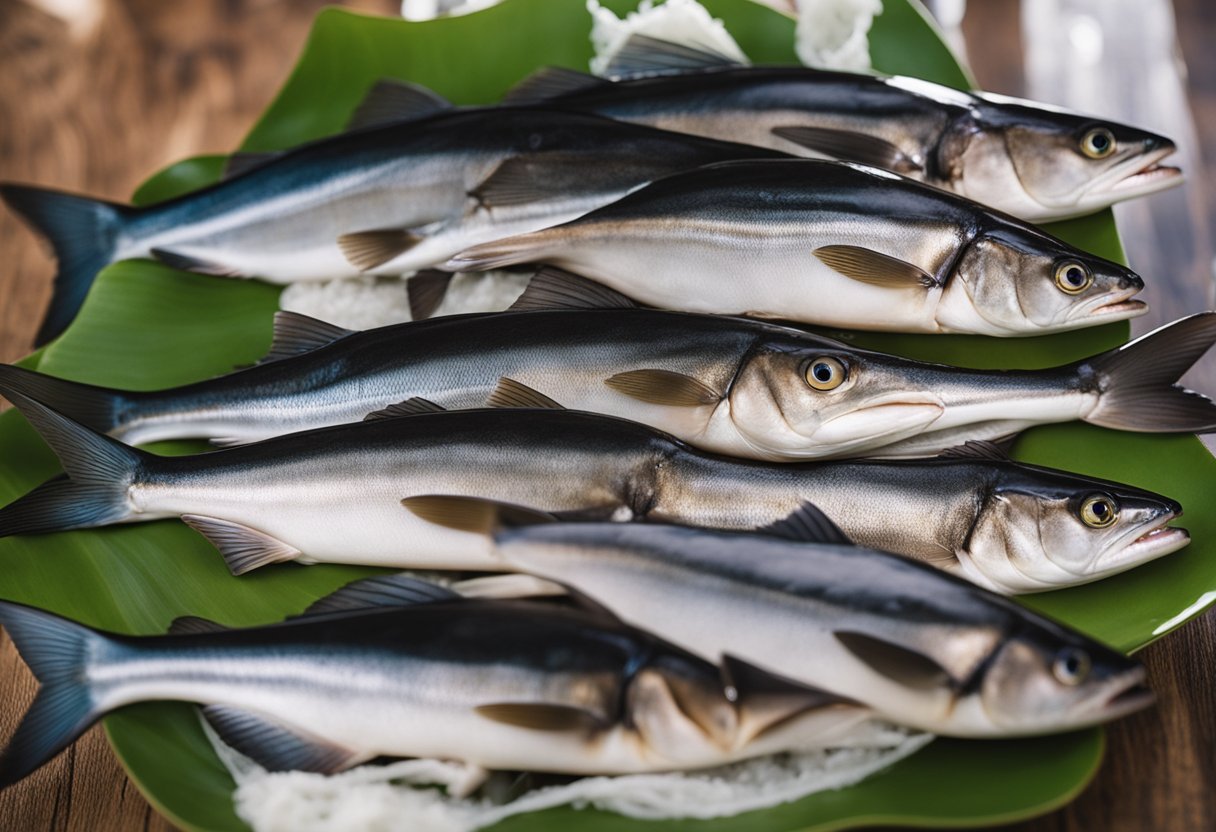
When buying fresh cobia, look for fish that has clear and bright eyes, firm flesh, and a sweet aroma. The flesh should be bouncy to the touch and not leave an indentation when pressed. If the fish has a dull gray color, a strong odor, or slimy texture, it’s best to avoid it.
To ensure the freshness of the fish, it’s important to store it properly. Raw cobia can be stored in the refrigerator for up to two days.
First, rinse the fish with cold water, pat it dry with paper towels, and wrap it in plastic wrap or aluminum foil. Place the wrapped fish in a container and store it in the coldest part of the refrigerator.
If you’re not planning to use the fish within two days, it’s best to freeze it. First, rinse the fish with cold water, pat it dry with paper towels, and wrap it tightly in plastic wrap or aluminum foil.
Place the wrapped fish in a freezer-safe container or bag and store it in the freezer. Frozen cobia can be stored for up to six months.
When thawing frozen cobia, it’s best to do so slowly in the refrigerator. Simply transfer the fish from the freezer to the refrigerator and allow it to thaw for 24 to 48 hours. Avoid thawing the fish at room temperature or in warm water, as this can cause bacteria to grow.
Overall, storing and buying fresh cobia is easy as long as you follow these simple guidelines. By choosing the freshest fish and storing it properly, you can ensure that your cobia dishes are always delicious and safe to eat.
Nutritional Benefits of Cobia
Cobia fish is a nutritious option for those seeking a healthy diet. It is rich in protein, which is essential for building and repairing tissues in the body.
A 3.5-ounce serving of cobia fish contains approximately 20 grams of protein, making it an excellent source of this macronutrient.
In addition to protein, cobia fish is also a good source of selenium. This mineral is essential for maintaining a healthy immune system and for supporting thyroid function.
A 3.5-ounce serving of cobia fish contains approximately 36 micrograms of selenium, which is more than half of the recommended daily intake.
Cobia fish is also low in mercury levels, making it a safe choice for pregnant or nursing women. It is a sustainable seafood choice and has been approved for human consumption by the FDA.
Overall, cobia fish is a nutritious and delicious option for those looking to maintain a healthy diet. It is low in fat, high in protein, and contains essential vitamins and minerals like selenium.
Incorporating cobia fish into your diet can help you meet your nutritional needs while enjoying a flavorful meal.
Frequently Asked Questions
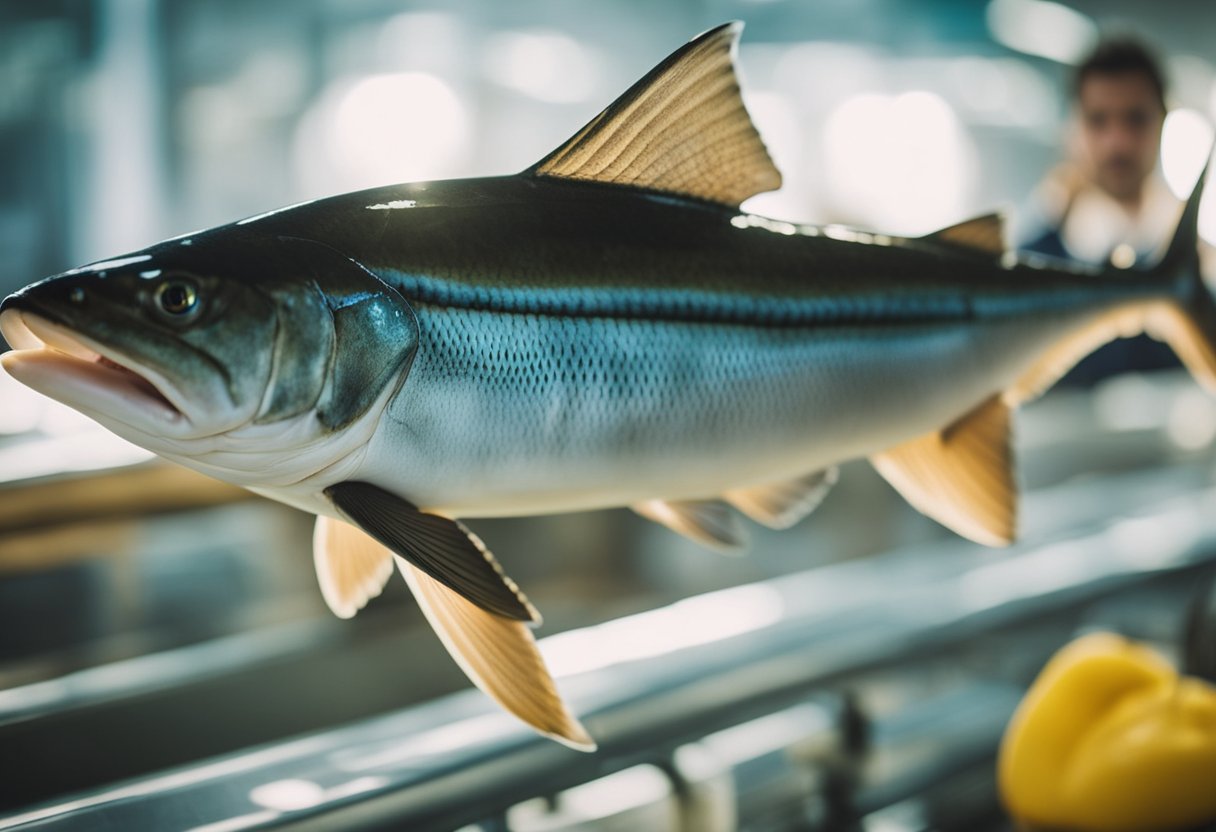
What are the nutritional benefits of cobia fish?
Cobia fish is an excellent source of protein, Omega-3 fatty acids, and selenium. It is also low in saturated fat, making it a healthy choice for those watching their cholesterol levels.
Additionally, cobia fish contains vitamins B6 and B12, which are essential for maintaining healthy nerve function.
Is cobia fish high in mercury?
Cobia fish is relatively low in mercury compared to other types of fish. The FDA has approved cobia for human consumption, and it is considered a safe choice for pregnant or nursing women.
Where can I buy cobia fish?
Cobia fish can be found in some grocery stores, fish markets, and online seafood retailers. It is not as widely available as other types of fish, but it is worth seeking out for its unique taste and nutritional benefits.
How does cobia fish compare to mahi-mahi?
Cobia fish has a similar taste and texture to mahi-mahi, but it is less fishy and has a buttery texture. Additionally, cobia fish is a more sustainable choice than mahi-mahi, as it is not overfished.
What is the average size of cobia fish?
Cobia fish can grow up to six feet in length and weigh up to 100 pounds. The average size of cobia fish caught for consumption is around 30-40 pounds.
What is a good way to cook cobia fish?
Cobia fish can be grilled, baked, broiled, or pan-seared. It is a versatile fish that can be seasoned with a variety of herbs and spices. One popular way to cook cobia fish is to grill it with a citrus marinade and serve it with a side of grilled vegetables.



